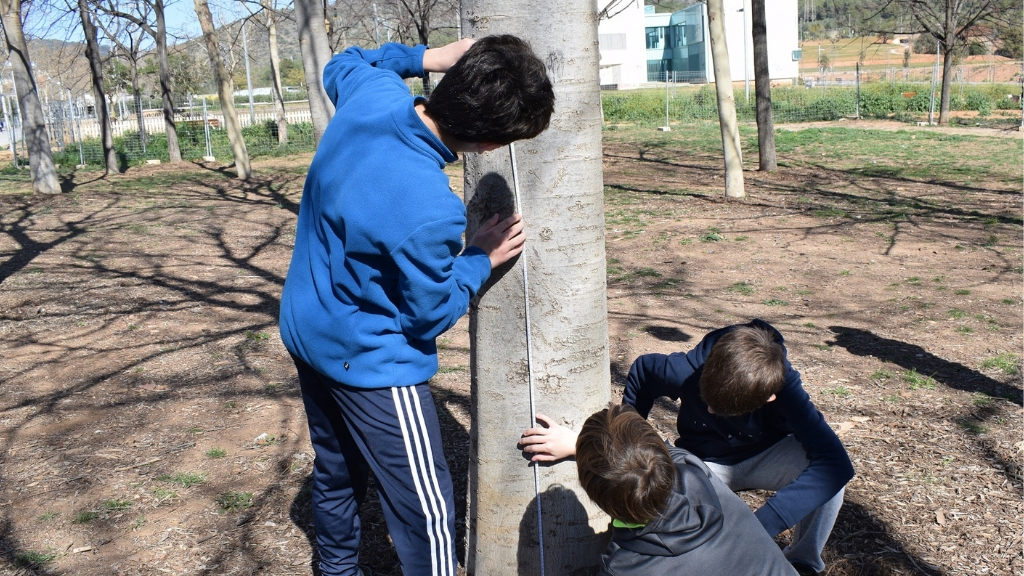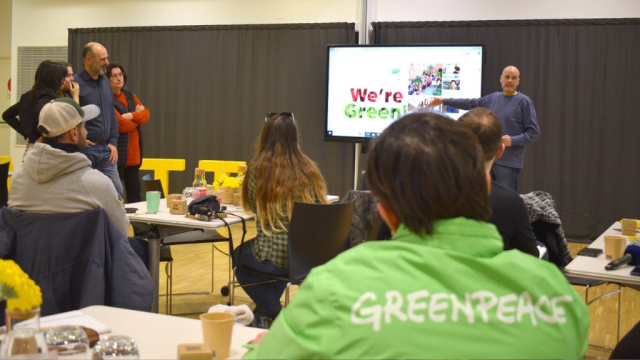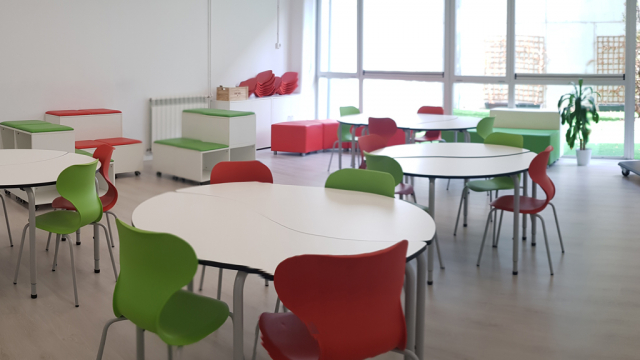
Nearly 700 students between 6th grade and 2nd year from schools and high schools in Viladecans went out to the streets today to measure the perimeter and height of almost 1,300 urban trees in the city, with the aim of quantifying the carbon stored in them. The educational action is part of the Co-Carbon Trees Measurements citizen science project, promoted by the Baix Llobregat Campus of the Polytechnic University of Catalonia (UPC) and Viladecans City Council. This activity should make it possible to obtain the necessary data for the most realistic estimate possible of the capture of CO2 by urban trees, and thus establish the capacity of urban trees to capture this greenhouse gas as a whole.
Jordi Mazón, Deputy Mayor and Councillor for the Promotion of Science and Scientific Dissemination, and lecturer in the Physics Department of the UPC at the Baix Llobregat Campus, explained that the data obtained "are essential to know how far we are from the climate neutrality planned by the EU, which cities and the continent must achieve by 2050, and allow the planning of urban strategies to combat climate change and reduce CO2 emissions".
The data collection will be repeated annually, always on Pi Day (14 March). These measurements will be taken again on the same trees, which will make it possible to know the inter-annual CO2 capture of the city's trees and, therefore, to have important data to know how far we are from CO2 neutrality and to better plan future actions to achieve this objective. The data will also allow to find out more about the response of the trees and their potential for CO2 sequestration and the annual weather conditions. They will be made available to both municipal technicians and teachers from participating schools and colleges so that they can develop associated educational projects.
Mazón, who holds a PhD in Science and is the coordinator of the project at the UPC, explained that "the project can be replicated on any campus and in any town, as its simplicity facilitates citizen participation. Given the climate emergency situation we are suffering, the social impact of projects like this one is of great importance". The councillor thanked the educational community: "Without citizen participation, it would not be possible to include a sufficiently significant number of tree-planting measures to give rigour to the results obtained", he said.
The promotion of citizen science is one of the policy lines of action that the Department for the Promotion and Dissemination of Science of Viladecans Town Council intends to promote. Viladecans, in its Strategy 2030, has as its mission to be a CO2 Neutral City. This objective is shared by more than a hundred European cities. To achieve this goal the European Union has defined the framework of the climate mission, the creation of the platform of cities of the seventeen Spanish cities for carbon neutrality CitiES 2030, and the NetZero EU, in which Viladecans is part of.
Quantifying CO2 emissions and CO2 capture is key to planning the goal of achieving carbon neutrality by 2030. CO2 emissions are quantified in a similar way everywhere, based on the consumption of different types of fuels associated with the city, in different supplies (direct and indirect). In contrast, CO2 sequestration in urban ecosystems is not precisely known, but has so far been based on estimates. CO2 sequestration by urban trees depends on several factors, such as tree type, age, weather and climate conditions.
A GREENER, MORE SUSTAINABLE AND HUMANE CITY
Viladecans is known for promoting and carrying out projects aimed at achieving a greener, more sustainable and more humane city. On 6 October, the European Commission awarded the Green Leaf 2025 prizes to the cities of Viladecans and Treviso (Italy). The Green Leaf award recognises municipalities that stand out for their commitment to address urban environmental challenges and demonstrate that sustainability is possible and a priority in city development. These are territories of between 20,000 and 99,999 inhabitants that are moving towards a higher quality of life for their inhabitants by stimulating new transformative activities towards a green transition.
Furthermore, on 5 October 2022, the network of local governments +Biodiversity (section of the Spanish Federation of Municipalities and Provinces) approved and presented the "Viladecans 3-30-300 Declaration". The declaration was presented by Mayor Carlos Ruiz, receiving the unanimous approval of the assembly. The document proposes to the municipalities and cities of Spain to work towards the implementation of the 3-30-300 model to achieve green and biodiverse municipalities by 2030. The 3-30-300 municipality concept responds to an urban model proposed by Professor Cecil Konijnendijk van den Bosch of the Nature Based Solutions Institute (Malmoe, Sweden), where municipal territories commit that citizens can see at least 3 trees from their homes; that the municipality has a minimum of 30% of tree mass in its territory, and that the neighbourhood has an accessible green space within 300 metres of their home.
In 2016, the city was chosen, along with large European cities such as Paris and Gothenburg, in the first call for Innovative Urban Actions (UIA) in relation to energy with the Vilawatt project. As a result, it set up a community mechanism for contracting electricity supply at home, created a local currency linked to energy, promoted awareness of energy efficiency among citizens and educational centres, promoted the use of shared electric cars in conjunction with the Som Mobilitat cooperative and carried out comprehensive energy renovations in private buildings to show the value of energy efficiency in construction.



